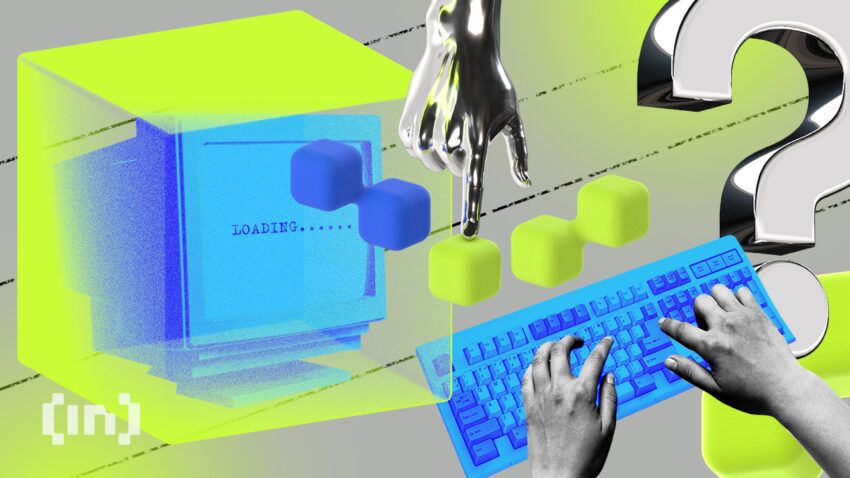A blockchain-agnostic protocol is a software solution designed to work seamlessly across multiple blockchain networks. This is also referred to as cross-chain. The term “agnostic” in the context of blockchain-agnostic protocols means being neutral and free from any one blockchain. As such, a blockchain-agnostic protocol has the ability to interact with decentralized applications (DApps) on more than one blockchain.
For builders and developers, leveraging a blockchain-agnostic protocol means you can create DApps that interact with other DApps built on other blockchains. In this guide, we dive deeper into blockchain-agnostic protocols, walking you through their main benefits and how they work.
What are the benefits of blockchain-agnostic protocols?

There are several benefits of blockchain agnostic protocols, both for developers who build with these tools and users who interact with them.
Interoperability
Interoperability is the ability of DApps on different blockchains to communicate and interact with each other. This is critical for the growth and mass adoption of web3 as a whole, as it enables the creation of cross-chain DApps that provide users with more options and greater flexibility. Without communication and interaction between DApps on different blockchains, you get blockchain silos in which ecosystems are closed off from the rest of web3.
Flexibility through standardization
Blockchain-agnostic protocols standardize data storage, transaction processing, and smart contract execution, enabling developers to write code that is then compatible with multiple blockchains.
Future-proofing your tech stack
As blockchain tech advances, new networks with better features may be developed. A blockchain-agnostic protocol ensures that applications can easily migrate to these new networks without significant code modifications, safeguarding against technological obsolescence.
Convenience for end users
At the end of the day, the user experience is everything. A blockchain-agnostic protocol that can interact with multiple chains means users can learn a single interface without worrying about constantly moving around.
How do blockchain-agnostic protocols work?
We’ve explored what blockchain-agnostic protocols are and their benefits. Now, let’s explore a little bit about how they work. To do this, we’ll use Push Protocol — a leading web3 communication layer — as an example.
For context, Push Protocol provides communication tools for DApps to enhance their UX. These communication tools include push notifications, instant chat, and video chat. All enable real-time web3 native communication between DApps and users across web3. Because the communication protocol is blockchain agnostic, apps and users that use Push communication tools can interact and communicate with DApps and users from other blockchains.
So, how does a given protocol become blockchain agnostic? It needs to cover these things:
- Enable smart contract compatibility: For a protocol to become blockchain agnostic, it needs to deploy its contract on multiple blockchains. In the case of Push Protocol, the Push Communicator smart contract exists on multiple chains. Thus allowing DApps on those chains to interact with one another. As such, any given blockchain-agnostic protocol needs first to identify which blockchains it wants to be compatible with. Then it can accordingly deploy on that network.
- Provide standardized APIs and abstraction layers: Blockchain agnostic protocols define standardized APIs (Application Programming Interfaces) and abstraction layers that shield developers from the underlying complexities of different blockchains. In the case of Push Protocol, push notification, chat, and video APIs are provided to developers as part of an SDK (software developer kit) package. This enables builders to integrate cross-chain functionality seamlessly into their DApps. Without these APIs, there is no consistent way to send transactions and interact with smart contracts across blockchains.
- Provide consensus and validation: Blockchain agnostic protocols need to ensure consensus and validation across different blockchains. Validators or nodes within the protocol verify transactions and ensure that cross-chain operations are executed accurately and securely. In the case of Push Protocol, every message is sent through Push Nodes. Push Nodes are a network of nodes responsible for validating each notification and chat message between addresses.
For projects looking to become blockchain-agnostic, the process begins with identifying the target blockchains relevant to the project’s goals and then deploying smart contracts to ensure compatibility across chains.
Next, protocols looking to become blockchain-agnostic need to provide standardized APIs to provide scalability and a solid infrastructure to futureproof the protocol. Finally, consensus and validation mechanisms must ensure the accuracy and security of operations across different blockchains.
The need for blockchain-agnostic protocols
Blockchain agnosticism is the future of decentralized technologies. It offers protocols the ability to leverage the strengths of several blockchains without compromising on performance. With new blockchains and DApps consistently emerging, the need for cross-chain interoperability becomes an increasingly valuable way of maintaining communication between DApps from legacy blockchains and those built on newer ones. Interoperability is a necessity if web3 is going to achieve mass adoption. Thus, the more blockchain-agnostic protocols, the easier it becomes for devs to build with those tools and for users to use them.
Frequently asked questions
What is a blockchain-agnostic protocol?
What are the main benefits of blockchain-agnostic protocols?
How do blockchain-agnostic protocols work?
Why is blockchain agnosticism important for decentralized technologies?
What is the significance of blockchain-agnostic protocols for developers and users?
About the author

Richa Joshi is the co-founder and marketing lead at Push Protocol. She has close to 12+ years of techno-functional experience in product management and development across multiple facets of the product lifecycle. This includes 2+ years of marketing experience in the blockchain space and over nine years of technology experience. She previously worked with Deloitte, contributing to and leading teams before foraying into web3.
Disclaimer
In line with the Trust Project guidelines, the educational content on this website is offered in good faith and for general information purposes only. BeInCrypto prioritizes providing high-quality information, taking the time to research and create informative content for readers. While partners may reward the company with commissions for placements in articles, these commissions do not influence the unbiased, honest, and helpful content creation process. Any action taken by the reader based on this information is strictly at their own risk. Please note that our Terms and Conditions, Privacy Policy, and Disclaimers have been updated.




